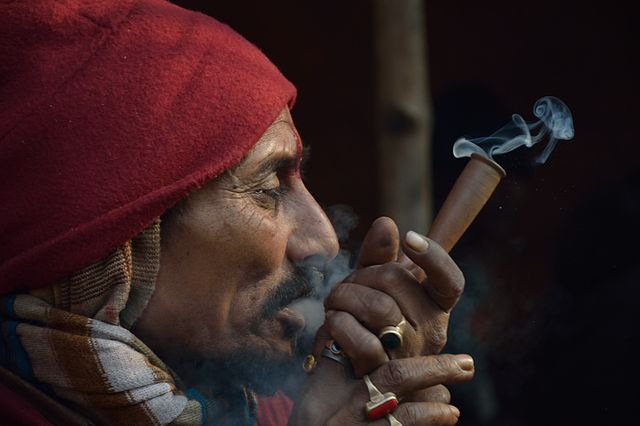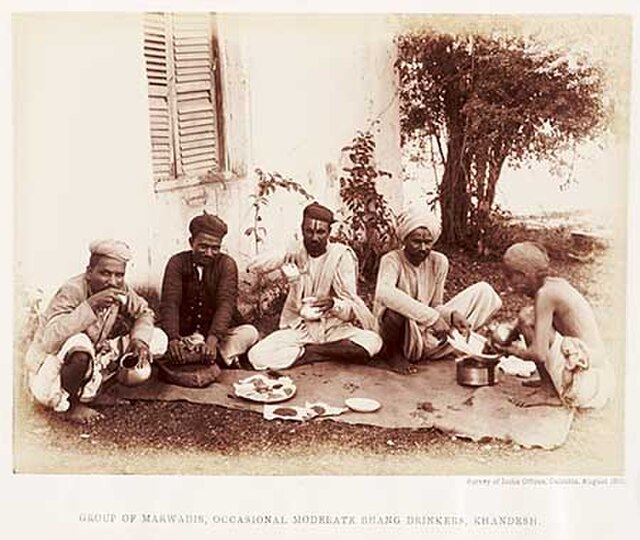Entheogenic use of cannabis
Cannabis has served as an entheogen—a chemical substance used in religious or spiritual contexts—in the Indian subcontinent since the Vedic period dating back to approximately 1500 BCE, but perhaps as far back as 2000 BCE. It was introduced to the New World by the Spaniards in 1530-1545.
A man smoking cannabis through a pipe in Kolkata, India
Bhang eaters from India, c. 1790; Bhang is an edible preparation of cannabis native to the Indian subcontinent. It has been used in food and drink as early as 1000 BCE by Hindus in ancient India.
A sadhu, or holy person, smoking cannabis in Kolkata, India
Yangshao culture (ca. 4800 BCE) amphora with hemp cord design
Bhang is an edible preparation made from the leaves of the cannabis plant originating from the Indian subcontinent. It has been used in food and drink as early as 1000 BC in ancient India. Bhang is traditionally distributed during the spring festival of Maha Shivaratri and Holi. Bhang is mainly used in bhang shops, which sell the cannabis-infused Indian drinks bhang lassi and bhang thandai.
Photo of bhang drinkers, from the Indian Hemp Drugs Commission report, 1893
Bhang
Process of making bhang in a village in Punjab, India. On the Hindu festival of colors called Holi, it is a customary addition to some intoxicating drinks.
Peda made with bhang leaves








